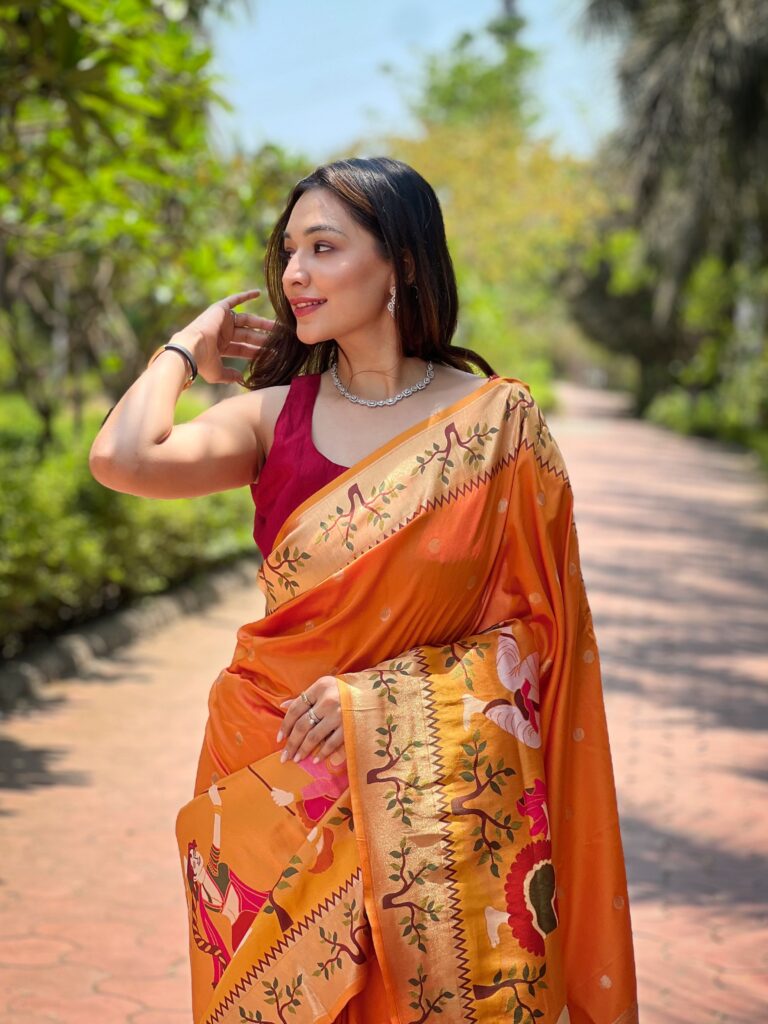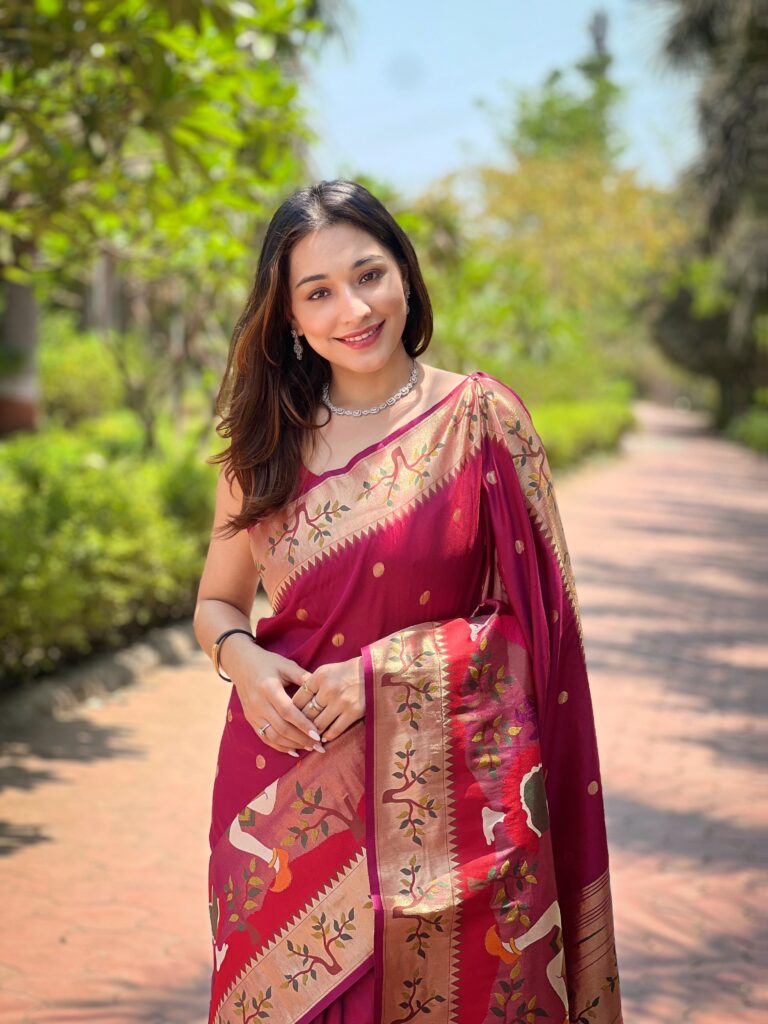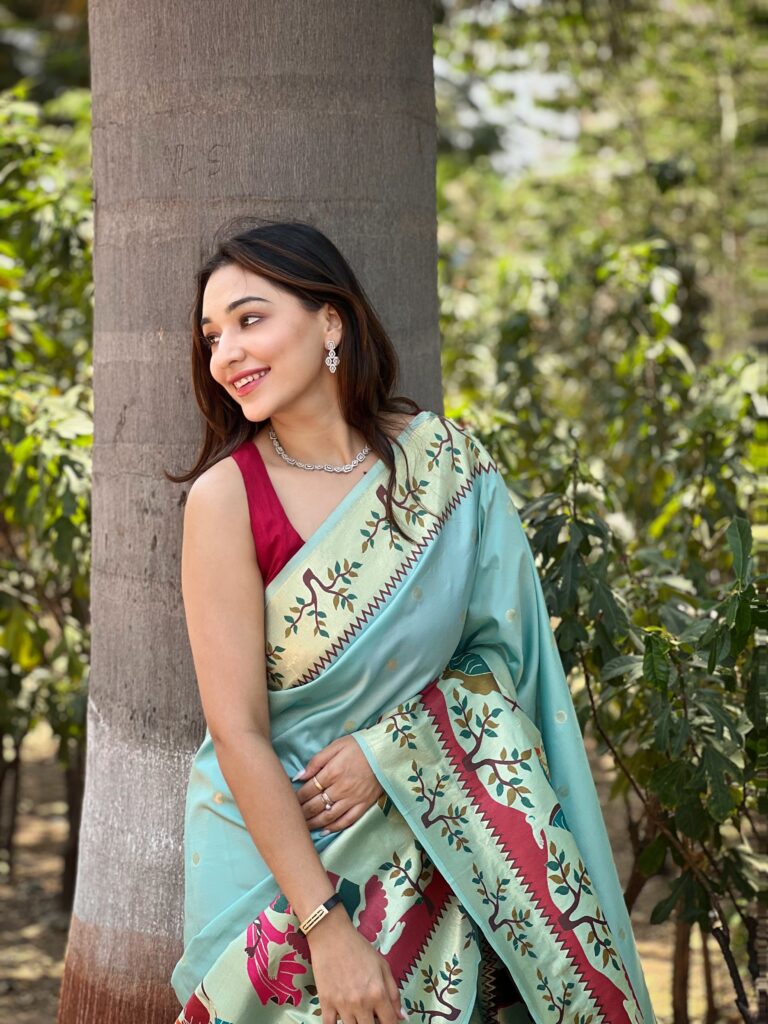The Kanjivaram saree, also known as the Kanchipuram saree, is a masterpiece of Indian textile artistry. Originating from the temple town of Kanchipuram in Tamil Nadu, these sarees are renowned for their rich silk fabric, intricate designs, and vibrant colors. A Kanjivaram saree is not just a piece of clothing; it is a symbol of tradition, luxury, and cultural heritage. Whether worn at weddings, festivals, or special occasions, this saree exudes grace and sophistication, making it a cherished possession for women across generations.
The Legacy of Kanjivaram Sarees
The history of Kanjivaram sarees dates back over 400 years, during the reign of the Chola dynasty. The weavers of Kanchipuram, who originally migrated from Andhra Pradesh, brought with them the art of silk weaving. Over the centuries, they perfected their craft, creating sarees that are synonymous with opulence and elegance. The sarees are traditionally woven with pure mulberry silk and adorned with intricate zari work, making them a favorite among brides and saree connoisseurs.
The Art of Weaving
What sets the Kanjivaram saree apart is its meticulous weaving process. Each saree is handwoven by skilled artisans, a process that can take anywhere from 10 days to several months, depending on the complexity of the design. The sarees are made using three shuttle techniques, where the body, border, and pallu are woven separately and then interlocked together. This technique ensures durability and gives the saree its distinctive look.
The zari used in Kanjivaram sarees is made from silver threads coated with gold, adding a regal touch to the fabric. The motifs often draw inspiration from temple architecture, nature, and traditional Indian art. Common designs include peacocks, mangoes (known as buttas), and checks, each carrying its own cultural significance.
Why Kanjivaram Sarees Are Special
- Luxurious Fabric: Made from pure mulberry silk, Kanjivaram sarees are known for their durability, sheen, and smooth texture.
- Vibrant Colors: These sarees are famous for their bold and contrasting colors, which are achieved using natural dyes.
- Intricate Zari Work: The gold and silver zari work adds a touch of grandeur, making the saree perfect for special occasions.
- Cultural Significance: Wearing a Kanjivaram saree is often considered auspicious, especially during weddings and religious ceremonies.
Types of Kanjivaram Sarees
The Kanjivaram saree comes in a variety of designs and patterns, each with its own unique charm. Some popular types include:
- Traditional Kanjivaram: Featuring classic motifs like peacocks, temples, and floral patterns, these sarees are perfect for weddings and festivals.
- Contemporary Kanjivaram: Modern designs with minimalist patterns and pastel shades are ideal for those who prefer a subtle yet elegant look.
- Bridal Kanjivaram: Adorned with heavy zari work and intricate designs, these sarees are a bride’s dream come true.
- Temple Border Kanjivaram: Inspired by temple architecture, these sarees feature elaborate borders and pallus, making them a timeless choice.

Styling Your Kanjivaram Saree
A Kanjivaram saree is a versatile garment that can be styled in numerous ways to suit different occasions. Here are some tips to help you make the most of this exquisite piece:
- Traditional Look: Pair your saree with gold jewelry, such as jhumkas, bangles, and a maang tikka, for a classic and elegant look.
- Modern Twist: Opt for statement jewelry or a sleek blouse design to give your saree a contemporary edge.
- Minimalist Style: Choose a saree with subtle zari work and pair it with minimalist accessories for a sophisticated and understated look.
Caring for Your Kanjivaram Saree
To ensure that your Kanjivaram saree retains its beauty and longevity, proper care is essential. Here are some tips:
- Always dry clean your saree to preserve the fabric and zari work.
- Store it in a cool, dry place, wrapped in a muslin cloth to prevent discoloration.
- Avoid spraying perfume or deodorant directly on the saree, as it may damage the fabric.

